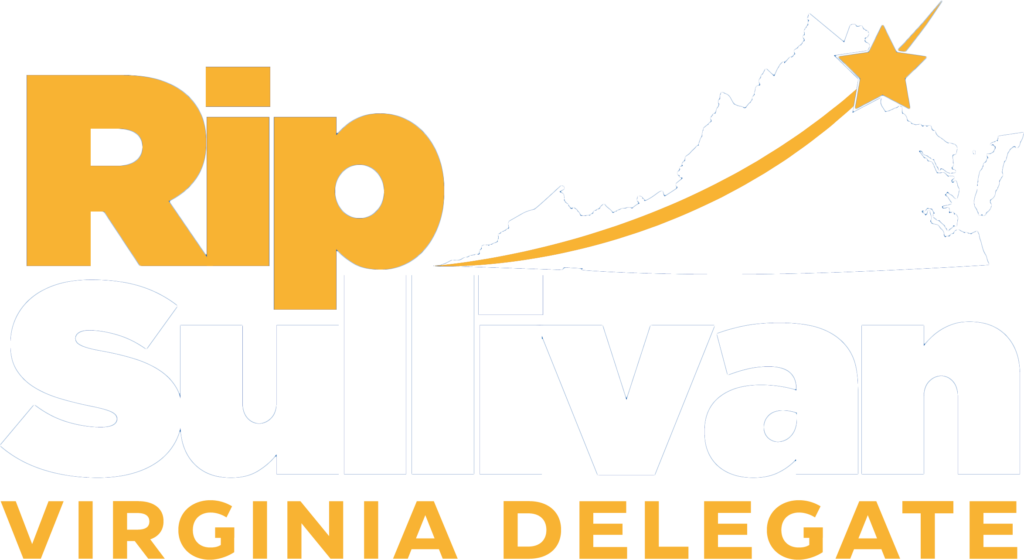Gov. Glenn Youngkin’s energy plan makes solar farms and wind farms sound like a threat to the availability of the commonwealth’s diminishing supply of farmable and developable land.
That document rants against the Virginia Clean Economy Act of 2020, legislation passed when Democrats controlled the governor’s office and the General Assembly, which for the sake of addressing the climate crisis requires that the commonwealth’s electric grid reduce carbon emissions to zero by 2050.
“Environmental stewardship extends beyond atmospheric emission,” grouses the 2022 Energy Plan, asserting that the 2020 act has had destructive consequences.
The act’s “requirements for significant amounts of solar developments has encouraged deforestation, loss of agricultural land and increased runoff of pollutants and sediment into our watersheds.”
To meet the Clean Economy Act mandates, solar farms “will require the development of roughly 161,000 acres of available land … a total footprint approximately four times the size of the District of Columbia.”
During a Dec. 8 panel conducted via Zoom teleconference software as part of the Virginia Press Association’s “VPA Day in the Capital” virtual event, Del. Rip Sullivan, D-Fairfax, characterized these ominous claims of land gobbled up as “scare tactics.”
“The governor in his energy plan talked about how this is going to take space four times the size of the District of Columbia. Sounds kind of scary, but if you run the numbers — people forget what a big state Virginia is.” If indeed that area calculation is correct — and Sullivan expressed skepticism as to whether it was — D.C. x 4 turns out to be a very tiny portion of the Old Dominion, he said, “about half of 1% of Virginia’s landmass.”
It’s 0.6%, to be precise. Thus the idea that “we’re going to denude the commonwealth,” as Sullivan summed up the anti-solar farm argument, seems a bit silly.
“We do need to be thoughtful about it,” Sullivan said. “But I don’t think in a state full of as many smart and well meaning people as Virginia that this is something we can’t figure out.”
Bipartisan agreements
Sullivan, a sponsor of the Virginia Clean Energy Act, also voted in favor of the final version of a 2022 bill sponsored by Michael Webert, R-Fauquier, that requires any small renewable energy project determined by the Virginia Department of Environmental Quality to have “a significant adverse impact on wildlife, historic resources, prime agricultural soils, or forest lands” to submit a mitigation strategy that will be subject to public comment.
Webert also participated in the VPA panel. Though Webert voted against the VCEA in 2020, in a refreshing display of bipartisanship, he and Sullivan clearly agreed on far more than they differed when it came to solar energy. Webert and his fellow Republicans voted in favor of a bill Sullivan introduced in the 2022 session intended to expand potential for solar sites in suburban and urban areas, using locality-owned properties such as landfills and large rooftops.
Webert’s legislation, House Bill 206, acknowledged the challenge of taking into account the competing interests for land use — several panel speakers reiterated that agriculture is Virginia’s largest industry — and the need to conserve the commonwealth’s unique natural resources.
“I think the bigger conversation moving forward is also, how do we incentivize some of these companies to put [a solar project] where it can be extremely useful, and, you know, to revitalize some of these areas,” Webert said. He made reference to legislation that allows local governments to grant machinery and tools tax exemptions to solar projects.
He and Sullivan also made reference to a project in Wise and Dickenson counties that could serve as a prime example of the sort of land reuse they want to encourage. The Highlands Solar project, as Sullivan phrased it, involves “putting a big solar facility on an abandoned mine site.”
Incentives needed
That site, the old Red Onion surface mine, is owned by the Nature Conservancy. A collaboration between the conservancy and Dominion Power Virginia, Highland Solar was announced in September 2021, its aim to convert 1,200 acres of the defunct mine and surrounding land into a solar farm expected to generate 50 megawatts, which at peak output will be enough to power 12,500 homes.
Nikki Rovner, associate state director for the Nature Conservancy in Virginia, explained that “we are working with Dominion and Sun Tribe,” a Charlottesville-based solar power company, “to put a solar project on that land and it is going to be more expensive, at least under current conditions, and that’s why funding for incentives is really, really important.”
She pointed out that a bill sponsored by House Majority Leader Terry Kilgore, R-Scott, that creates incentives for clean energy development in former coal mines and brownfields, passed the General Assembly unanimously this year “but it did not get any funding.”
She told Sullivan and Webert, “that’s hopefully going to be the conversation this coming session, and I for one was really excited to hear you both say you would support that.”
While it’s impossible to fully guess how the 2023 General Assembly session will play out, it was a pleasure to observe so much reasonable agreement among the stakeholders and the politicians of opposing parties when it came to this particular subject.
It’s heartening for the future of solar power, an essential piece of the future energy puzzle — but, for the sake of a better future for the commonwealth, when it comes to other fields of concern, such as health and education, it would also be heartening to see this level of cooperation and understanding become the norm in the legislature, and, especially, in the governor’s office.

